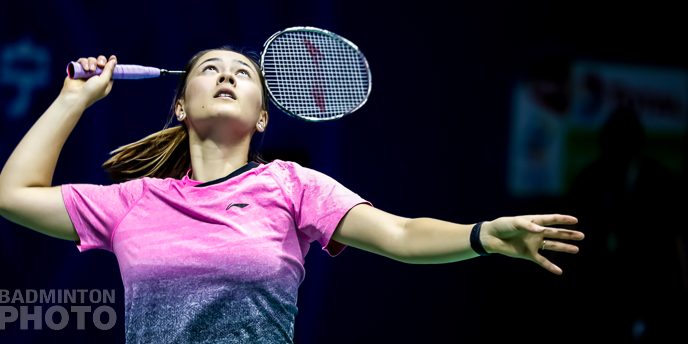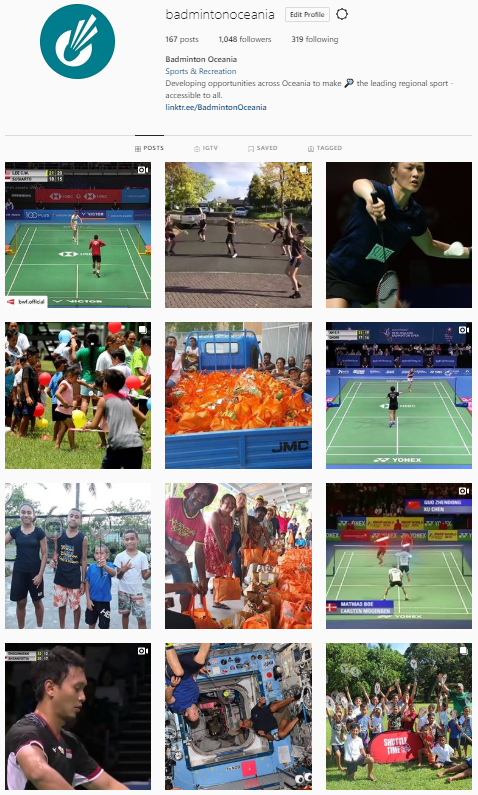Photo credit: Badminton Photo
Three-time Oceania women’s doubles champion and world #26, Gronya Somerville, was recently announced as one of the players selected in the second phase of the BWF’s star creation programme – an initiative which has been designed to help grow the global popularity of badminton players and of badminton as a sport.
Over the past year, Somerville has seen a huge increase in her Instagram following – currently sitting at 187,000 followers – collaborating with sponsors Li-Ning and Slim Secrets. Sponsored posts are becoming a more popular career move for sportspeople, to help fund their vigorous lifestyles as a professional athlete.
However, Gronya admits that social media is no easy feat. A significant amount of time and effort goes into the content creation, which is often met by online ‘trolling’ and a need to find a balance to care for mental health.
Talking of her experiences with social media and the star creation programme so far, Gronya took part in our Q+A:
- How have you benefited from your social media accounts and the training from the BWF?
The training only started recently, and I am part of only the second group of five athletes to receive this opportunity. So far, I am just learning some of the ways in which to keep your content relevant and up to date, enhance your engagement through hashtags and making it easier for followers to find you. This week the team running the programme will be teaching me about YouTube, as I am new to it, to learn how I can get the most out of it. The programme aims to give you more information and tools to enhance your social media skills but we still have to take the initiative and put them into play to see the full effects of it. They mentioned one athlete from the previous group found a new sponsor after improving his social media and followers. Essentially, the programme is to make badminton star athletes more appealing to sponsors and fans to increase the engagement around the sport. Without a good social media account and following I wouldn’t be able to play badminton at the level I am. I wouldn’t be able to fund all my tournaments and travel and I’m really lucky and thankful to my sponsors who support me and especially Li-Ning, my badminton equipment sponsor, who has supported me since 2013 when I was 50 in the world and hadn’t won anything big.
- What do you like/dislike most about social media?
Honestly, there is a lot I dislike: I think it can too easily promote vanity, bullying, self-doubt and a lot of other negative mental health outcomes, as well as waste so much time and I fear for children growing up with such a focus on social media and reliance on technology.
However, there is a flip side to it. If you can manage your account well and you stay on top of the mindset/approach and the purpose of your account and what you’re showing, then a lot of great things can come of it such as connections, access and insights into things that would otherwise be less accessible and business opportunities within the rise of “the influencer”.
- What is the reality of being an influencer like?
I’m still very much an amateur at all of that and trying to learn more about it and improve, but I think the hardest part of it all is kind of figuring out your ‘brand’ and what you want to show/represent. Sometimes what you might like to post isn’t what people know you for or want to see of you, so having to figure out the balance between what people want, what you’re comfortable showing, how you want to be portrayed. Then from there you need to get creative and think of what people interested in you and your niche (badminton) want to see, then go make it. Part of it is making sure to get a photo/video when there is an event or opportunity which is sometimes hard/not convenient or just slips peoples minds. So needing to be alert and make the most of photo opportunities is helpful.
A big thing is also trying to be regular and stay up to date so that people remain engaged and interested. Then within all that trying to be authentic and yourself and connect with people to grow a community. I’m still figuring it all out, but as I do more of it I definitely can appreciate the time that proper ‘influencers’ put into it. Especially those on YouTube as editing videos takes so long. Even editing photos, cropping videos, replying to peoples comments, all of that is stuff that still take up a lot of time.
I think for a long time this hasn’t had to be as necessary for an athlete to do themselves but as brands marketing costs shift to social media, more and more athletes are seeing the advantages of improving their channels and content. For most athletes this has previously not been a priority and are all new skills and things they have to develop. I feel like for a lot of athletes it may also conflict with their morals as we can be the kind of head down work hard, let the results speak for themselves kind of mindset while social media is very look at me and what I can do kind of thing, so I know a lot of athletes struggle with that even if they do see the sponsorship benefits.
Then of course there’s the negative comments, losing sleep over what people will think of you or if you said something politically incorrect or offended someone or made some error that is broadcast to the world, so developing thick skin and being able to step back from it and know that there’s a life without it helps.
- How will the media training impact the way you train?
The struggle with getting content during training is that it is often disruptive. To get specific content, I will need to do a whole other session which can sometimes be tiring as I of course need to still do my normal training outside of this. But often it is just trying to get a tripod and set it up and hopefully get what I need or ask someone who’s resting to quickly film a set. I’m sure it might be easier with a cameraman following you but we aren’t at that stage yet, haha.
- What’s the funniest/most memorable interaction you have had with a fan through Instagram?
There are a lot of funny ones, mostly involving guys professing their love for me. If my friends ever see funny comments, they never let me live them down
- What advice would you give to young players looking to set up similar pages who could use social media to attract sponsors/fans?
I think coming from Australia and having to self-fund my career, it is especially important to try and have a good social media page projecting your badminton life, mainly to improve appeal to sponsors and brands. As a junior it is probably best to have a seperate personal account where you can post more personal or friend oriented content, but a public more professional account is definitely something I would advise for all junior badminton players looking to play badminton for the long-term to set up.
Even if social media is not something that interests you, I think it is important to make the effort of uploading something once a week or so just with a little update and especially updates around tournaments and results. If you enjoy it and take an interest in social media then doing something like starting a YouTube channel or coming up with something new and creative would be a great way to stand out.
Social media takes time to grow, but as players get older and start making Australian Senior teams, it is good to have already established social media accounts in case certain opportunities come up. That is what happened with me when I was 16 years old and the Chinese media found out I was related to Kang You Wei (a famous Chinese political reformist) and my social media blew up a bit and from there and I got new sponsorship opportunities.
I know it can be hard for people putting themselves out there and you can worry about what others might think, especially other badminton players who are your friends or players who might be better than you and doubting yourself, but in the end as long as what you’re posting is ok by you and the people close to you and it’s serving a purpose then it shouldn’t matter what others think and there’s no point wasting time worrying about others negativity.








